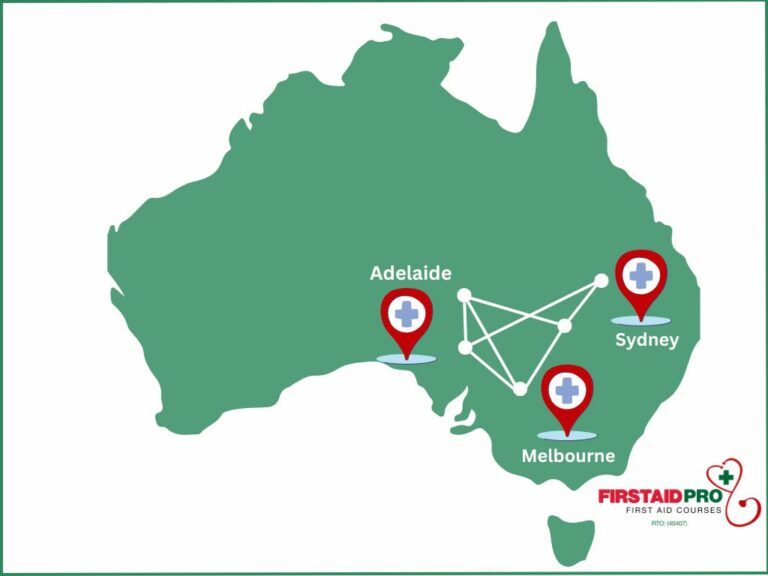Introduction
In minutes of situation, having the best tools can indicate the distinction in between life and death. Cardiopulmonary resuscitation (MOUTH-TO-MOUTH RESUSCITATION) is an important skill that everyone should discover, specifically since it can save lives throughout emergency situations. This is especially real in Australia, where abrupt heart occasions, sinking occurrences, and sports-related heart attacks are unfortunately typical. Beyond recognizing how to perform CPR, understanding what important CPR equipment you should have on hand is similarly important. This write-up explores the important devices and tools needed for efficient CPR practices in Australia.
Essential mouth-to-mouth resuscitation Tools in Australia: What You Ought to Have on Hand
When it pertains to lifesaving measures like CPR, having the best tools easily offered is an outright need. The adhering to things are crucial for anyone looking to be planned for emergency situations:
1. Automated Outside Defibrillator (AED)
An AED is a mobile gadget that can evaluate heart rhythms and supply an electrical shock if needed. It's important in instances of sudden heart arrest.
- Benefits of AEDs: Quick access to an AED dramatically increases survival rates. Where to Locate AEDs: Many public locations in Australia are geared up with AEDs, consisting of shopping center and schools.
How to Utilize an AED? Utilizing an AED is simple:
Turn on the device. Attach pads to the client's bare chest. Follow voice motivates for analysis and shock delivery.2. Mouth-to-mouth Resuscitation Masks and Barriers
These gadgets safeguard both the rescuer and sufferer during mouth-to-mouth resuscitation.
- Types of Masks: Pocket masks with one-way shutoffs are popular choices.
3. Emergency Treatment Kit
A thorough emergency treatment kit ought to have fundamental clinical materials like bandages, bactericides, gloves, and scissors.
- Contents of a Great First Aid Kit: Adhesive bandages Sterile gauze pads Antiseptic wipes Disposable handwear covers
4. Individual Safety Tools (PPE)
Gloves, masks, and face shields protect versus transmittable conditions during resuscitation efforts.
5. Training Manikins
Manikins are important for exercising mouth-to-mouth resuscitation methods effectively and accurately.
- Importance of Practice: Normal training guarantees preparedness when actual emergency situations occur.
6. Online Resources for Training
Accessing on-line training courses can assist familiarize yourself with both CPR strategies and the latest guidelines.
Understanding mouth-to-mouth resuscitation Techniques
Knowing how to execute mouth-to-mouth resuscitation efficiently can greatly influence its success rate:
7. Just how to Do CPR?
CPR includes breast compressions and rescue breaths:
- Compression Depth: The correct compression deepness for adults is about 5-6 cm.
Table: Compression Depth Guidelines
|Age|Compression Depth|| ------------------|------------------|| Adults|5-6 centimeters|| Kids (1-8)|4-5 cm|| Babies (<< 1 year)|3-4 centimeters|</p>
8. Baby CPR Technique
This method differs dramatically from grown-up treatments as a result of the fragility of babies:
- Use two fingers for compressions at a deepness of concerning 3-4 cm.
9. Advanced Resuscitation Skills
For healthcare providers or those seeking sophisticated training, skills such as intubation or IV treatment may be necessary.
Special Scenarios in CPR
Certain circumstances require modified strategies or additional considerations:
10. Sports-Related Heart Arrests
Athletes may experience heart occasions differently because of physical exertion.
11. Drowning Victims
CPR methods may need modification based upon water breathing effects:
- Focus on rescue breathing prior to upper body compressions.
Household CPR Readiness
Being prepared at home can save lives during emergency situations:
12. Creating a Family Members Emergency Situation Plan
Discuss emergency protocols with relative regularly.
13. Storing Important Equipment
Keep your first aid package, AED, and other important equipment easily available at home.
Workplace Emergency situation Plans
Every workplace should have a clear method pertaining to cardiac emergencies:
14. Developing Workplace Guidelines
Establish clear procedures for employee to follow during an emergency circumstance entailing heart arrest.
Local Resources for Training and Certification
Taking activity begins with education and learning:
15. Local Mouth-to-mouth Resuscitation Classes in Australia
Many companies use courses customized to different audiences-- be it parents or healthcare professionals.
List of Organizations Offering Classes
- St John Ambulance Red Cross Australia
16. On The Internet CPR Qualification Courses in Australia
Online choices make it simpler than ever to find out crucial lifesaving skills at your own pace.

Understanding Accreditation Validity
Keeping your skills present is equally as crucial as recognizing them initially:
17. Mouth-to-mouth Resuscitation Certificate Validity in Australia
Most qualifications need revival every 3 years; check private program requirements for details.
FAQs
Q1: Exactly how commonly need to I freshen my CPR training?
It's a good idea to refresh your abilities every one to 2 years due to updates in standards or techniques.
Q2: Can any individual execute CPR?
Yes! Any person can perform hands-only CPR despite their accreditation condition; however, qualified people will certainly be more effective.
Q3: What's the difference between grown-up and infant CPR?
The major onsite medical training for first aid distinction depends on compression deepness and method made use of; grown-up compressions are deeper than baby compressions due to dimension differences.
Q4: Do I require unique tools for carrying out infant CPR?
Not necessarily-- standard emergency treatment packages suffice; however, expertise regarding appropriate methods is crucial.
Q5: Is it necessary to make use of rescue breaths throughout CPR?

Q6: Where can I find neighborhood classes or qualification options?
Inspect recreation center or organizations like St John Rescue or Red Cross; they frequently use classes across Australia!
Conclusion
Being prepared with vital CPR devices not only equips people but additionally fosters an area prepared to respond effectively throughout emergency situations. With resources available throughout Australia-- from local classes to on-line qualifications-- there's no excuse not to outfit yourself with these lifesaving skills. Keep in mind that discovering exactly how to do reliable CPR means being positive regarding safety and security-- not simply for ourselves however likewise for those around us who could one day rely first aid brisbane on our preparedness throughout a moment of crisis!